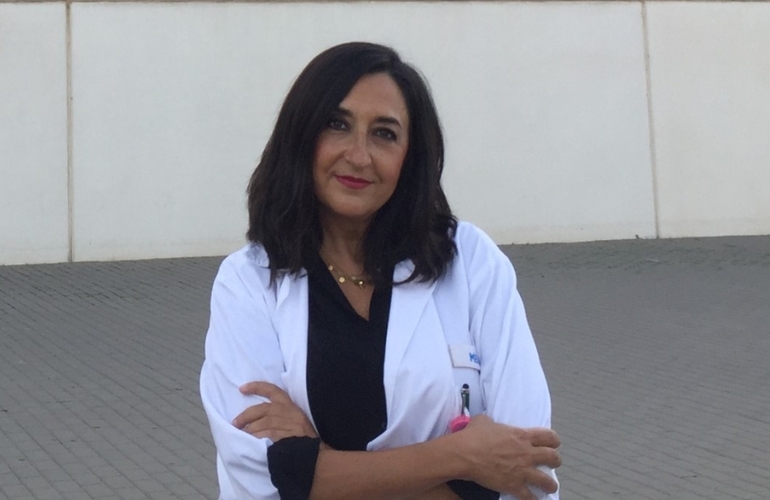World Radiology Day, celebrated today, is a good time to reflect on the usefulness of this medical specialty. Most of us probably don’t realize how important the presence of various diagnostic imaging systems is, but imagine if it didn’t exist. How do we know if there are broken bones, tumors, damage to the heart, brain or lungs? Possibly a painful intervention. First, radiology can relieve our pain. SERAM President Asunción Torregrosa elaborated further on her expertise.
For most users, radiology may not be visible enough within the public health structure. How does it impact diagnostic improvements?
You may have heard that radiologists are doctors to other doctors. That’s not what happened. We are our patients’ doctors, just like internists or neurologists. It is true that in some areas of radiology we do not work directly with patients as in other areas (e.g. breast radiology). Our specialty is medicine in the form of medical images obtained through techniques of different physical origins (ultrasound, X-rays or magnetic fields). It’s not that it has any impact on improving diagnosis, but the vast majority of diagnoses are based on imaging technology, more than 80%. Therefore, radiology is at the core of the nursing process.
It has been almost 130 years since X-rays were discovered. Just limited to this imaging diagnostic system, how has it developed in terms of safety and to what extent has it developed?
It has evolved a lot due to the development of technology and the evolution of knowledge. Today, X-ray-based diagnostic equipment can acquire hundreds of images with as little radiation as possible. Specialized training for technicians and oversight by radiologists for correct indication of radiological testing means we can minimize the impact and improve safety. However, we know that CT is the most important source of ionizing radiation for the population. Therefore, radiologist standards must be considered. Not surprisingly, we change indications for ionizing radiation testing to indications for testing that does not use ionizing radiation, always for the benefit of the patient and when the risks outweigh the benefits.
November 12 is World Pneumonia Day. Thinking about COVID-19, if the data were available, to what extent could radiology help detect more cases, prevent the spread of the pandemic, or avoid deaths or worsening of the disease?
Although difficult to quantify, during the height of the pandemic, the use of chest X-rays helped make decisions about whether to hospitalize patients or whether to move patients from areas away from hospitals.By the way, the magazine’s winning article Radiology The SERAM 2023 award is based on the development of a predictive model of COVID-19 patient severity using chest X-rays and other parameters, with a sample of 440 patients recruited over 60 days in just one hospital. In the case of CT, it helped diagnose SARS-CoV-2 pneumonia even before test results were available, and of course quantified lung damage in infected patients.
For which types of diseases is the use of diagnostic imaging technology most important?
In oncology, for example, it is critical to use imaging techniques for diagnosis and initial staging to assess treatment efficacy and detect early recurrence. Generally speaking, almost all of them exist to a greater or lesser extent. Of course, they are mandatory in situations that are critical to the patient’s life: I’m talking about multi-trauma patients, traffic accidents, strokes, etc. We even perform cardiac CT scans when myocardial ischemia is suspected (i.e. when we wonder if chest pain could be a heart attack).
Going back to the history of radiology, which type of technology represents the most recent revolution and is truly the one that has made the most visible contribution to improving public health?
I would say CT, because it is a technology with very high spatial and temporal resolution, with which we can acquire thousands of images in seconds, we can reconstruct, post-process, acquire radiomics data, etc., To assess the condition of clinical patients. I also value ultrasound, which in expert hands and without the use of radiation, can provide precise information on countless procedures. And, of course, there’s interventional radiology, which treats disease through image-guided, minimally invasive procedures to avoid unnecessary surgeries, complications and hospitalizations.
Where is radiology headed? What mid- to long-term goals can we expect?
Work to obtain precise information from images that is undetectable to the human eye; Incorporate new population screening programs using medical imaging as a technology for early detection of cancer; Work to integrate artificial intelligence tools into our daily lives to support and avoid the inconvenience of medical Time spent on procedures with poor diagnostic performance; moving toward personalized medicine. Finally, let people know that behind their MRI, scan, or local treatment of liver metastases, we are the radiologists, the medical imaging experts.

